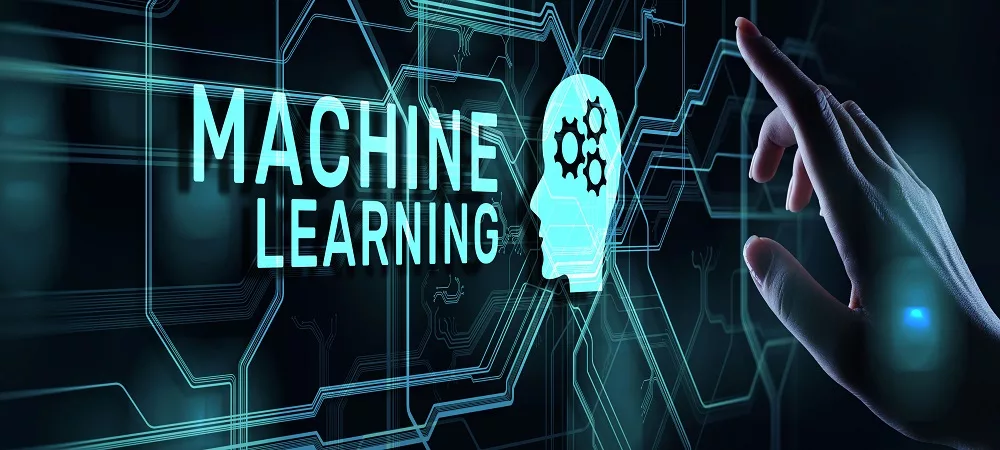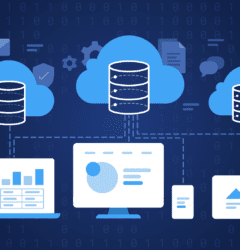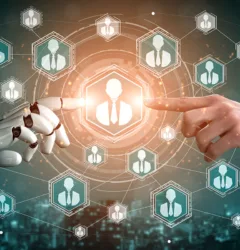10 Nov

In the vast expanse of artificial intelligence, 2023 marks a pivotal moment. Traditional machine learning, rooted in statistical algorithms, and modern generative AI innovations like ChatGPT and BERT are shaping the landscape of AI solutions. As businesses and researchers traverse this terrain, a fundamental question arises: is traditional machine learning fading into the background, overshadowed by the allure of neural networks and generative AI?
Let’s embark on a comprehensive exploration of this evolving field, understanding its intricacies and dissecting the coexistence of traditional and modern machine learning techniques.
Understanding Traditional Machine Learning: A Foundation in Statistics
Traditional machine learning, the bedrock of AI applications, relies on statistical algorithms. Supervised and unsupervised learning are its pillars, enabling the development of models from structured datasets.
Think of it as teaching a computer to recognize patterns. There are two main acts:
- Supervised Learning: This act involves showing the computer labeled examples, like teaching it the difference between cats and dogs in photos. The computer learns patterns and can then identify new examples correctly.
- Unsupervised Learning: Here, the computer explores unlabeled data, finding hidden similarities, just like sorting a messy room into different groups based on similar items.
Think of linear regression, K-means clustering, decision trees, and support vector machines. A precise summary of these are as follows:
- Linear Regression: It predicts numbers based on past data trends, like forecasting tomorrow’s weather based on previous temperatures.
- K-means Clustering: Imagine organizing people at a party into groups based on similar interests. This trick groups similar data points together, creating order from chaos.
- Decision Trees: Like solving a mystery step by step, decision trees navigate decisions based on input features, leading to solutions.
- Support Vector Machines: These are like digital guards, drawing lines to separate different things, ensuring everything stays in its place.
Their importance? These are the stalwarts of traditional machine learning, deciphering patterns and making predictions.
Limitations of Traditional Machine Learning
However, traditional machine learning is not without its limitations:
- Limited Scalability: Scaling these models with vast and diverse datasets can be challenging, demanding substantial human intervention.
- Data Preprocessing Challenges: Extensive preprocessing and feature engineering are necessary, making it time-consuming, especially for complex relationships in data.
- Struggles with Unstructured Data: Dealing with high-dimensional and unstructured data like images and audio remains a challenge.
- Adaptability Concerns: These models might not adapt seamlessly to unseen real-world data, hindering their practical applications.
The Rise of Neural Networks: A Leap into Deep Learning
Neural networks are like AI’s brainiacs, decoding complex data effortlessly. Think of them as wizards: Convolutional Neural Networks (CNNs) see images as a whole, useful for tasks like face recognition. Transformers understand languages deeply, aiding translation and summarization. In healthcare, CNNs diagnose from images, while in finance, Transformers detect fraud. These digital wizards make AI smarter and faster, revolutionizing industries. Their future? Even more advancements in our tech-driven world!
The Significance of Traditional Machine Learning
Amidst the neural network revolution, traditional machine learning methods persist for several crucial reasons:
- Simpler Data Requirements: Traditional ML triumphs in scenarios where smaller, structured datasets are abundant, offering practical solutions where neural networks might be overkill.
- Simplicity and Interpretability: Unlike their intricate neural counterparts, traditional ML models are rooted in statistical principles, offering interpretability. Decision trees, for instance, provide clear insights, aiding practitioners in understanding their models.
- Resource Efficiency: While neural networks often require expensive hardware and extensive training times, traditional ML algorithms offer resource-efficient alternatives. They deliver meaningful results even with constrained resources, making them accessible to a broader audience.
- Problem-Specific Solutions: Deep learning isn’t a universal panacea. Traditional ML shines in specific scenarios, such as medical diagnosis with limited data or instances where computational capacities are restricted.
Machine Learning in 2023: Bridging the Divide
As we step into 2023, traditional machine learning stands tall amid the swiftly changing AI panorama. Industries, especially Fast-Moving Consumer Goods (FMCG) companies, rely on ML algorithms for pivotal tasks. Picture this: your favorite online store suggesting products tailored just for you—that’s the magic of personalized recommendations powered by ML.
Additionally, these algorithms play a key role in supply chain optimization, ensuring that products reach the shelves at the right time, in the right quantity. This seamless correlation not only boosts efficiency but also ensures customer satisfaction.
What’s intriguing is the blending of old and new. Hybrid approaches are becoming increasingly prevalent, marrying the reliability of traditional methods with the innovation of modern techniques. This fusion allows industries to harness the best of both worlds, optimizing operations and enhancing outcomes.
While deep neural networks have been the go-to choice for complex predictions, studies are now championing gradient-boosting regression trees (GBRTs) for efficient time series forecasting. It’s important to recognize a hidden gem in the world of algorithms. GBRTs, with their precision and speed, are rewriting the rules of prediction, offering a new paradigm for businesses to explore.
Conclusion: A Harmonious Coexistence
As the digital landscape evolves, the coexistence of traditional machine learning and modern generative AI paints a nuanced picture. While neural networks dazzle with their complexity, traditional ML remains indispensable for its simplicity, interpretability, and problem-specific solutions. In 2023 and beyond, the fusion of these methodologies heralds a future where tailored solutions meet the demands of a diverse and ever-changing world.
References:
- Smith, J., & Johnson, M. (2023). Do We Really Need Deep Learning Models for Time Series Forecasting? Journal of AI Research, 45(7), 112-125.



